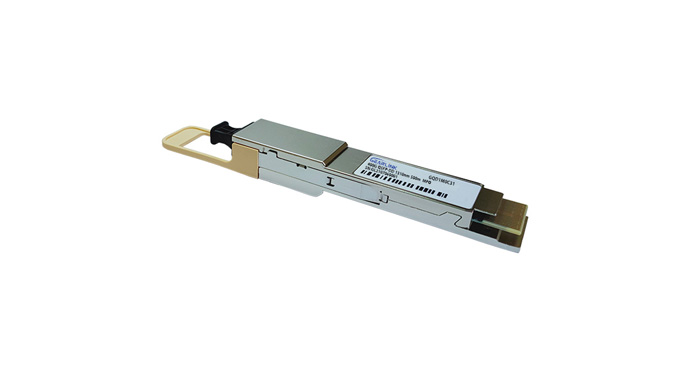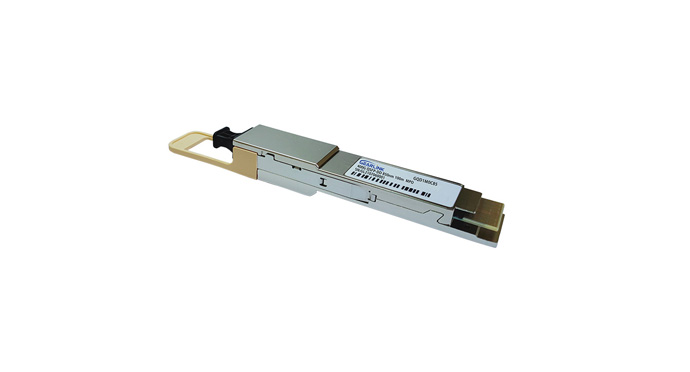With the explosive growth of network traffic, 400G optical transceiver will undoubtedly be the dominant rate in the following market. The current 400G optical module does not have a particularly perfect solution, 400g optical transceiver is constantly optimized. And QSFP-DD is currently a popular package.
Besides 400g optical transceiver, Gearlink, as a professional optical module supplier, we also offer 100g optical transceivers, 40g qsfp+ transceiver, 25g transceiver, module sfp 10g, sfp transceiver, direct attach cable and active optical cable. Contact us to get 400g optical transceiver price.
400G optical modules of GearLink transceiver manufacturer are divided into 400G SR8 and 400G DR4. 400g optical transceiver also can be divided into multi-mode and single mode module according to the mode.
commercial 0 to 70°C case temperature operating range;
industrial -40 to 80°C case temperature operating range;
Hot-pluggable electrical interface;
Hot-pluggable electrical interface • Using standard 12 Channel MPO/APC Connector;
Supports 400 Gbps data rate links up to 70m/100 m via OM3/OM4, respectively;
Typical Power Consumption: 10W (each port);
Adopt either standard 2 Row by 12-channel or 1 Row by 16-channel MPO connectors inside the module.
Ethernet for 400GBASE-DR4
For 400 Gb/s Ethernet Application
HPC Interconnects
Proprietary Interconnections
①QSFP-DD
QSFP-DD (Quad Small Form Factor Pluggable-Double Density) DD refers to double density. It is an expansion of QSFP, adding one row to the original 4-channel interface to become 8-channel, which is the so-called double density.
②OSFP
OSFP (Octal Small Formfactor Pluggable), which means that OSFP optical module uses 8*56G channels to achieve 400G transmission.
③CFP8
CFP8 is an expansion of CFP4, the number of channels is increased to 8 channels, so the size is also increased.
Single mode fiber transceiver
Transceiver using 8x 50g pam4 (such as fr8): "8" means 8 wavelengths are used, and each wavelength operates under 50g pam4. Eight wavelengths are multiplexed into one fiber through a duplex LC interface. Some transceivers such as 2x FR4 also use 8 lasers but are divided into 2 groups of 4 wavelengths. The two groups are multiplexed into one optical fiber respectively, and the transceiver provides a 2x200g interface on the dual CS connector.
Multimode short-range (SR) transceiver
The main trends are SR8 (ieee802.3cm) and Sr4 2(MSA BD4.2)。 For SR8, "8" means that there are 8 optical channels on 8 separate fibers. Since each optical channel operates at 50g pam4, a total of 16 fibers (8 TX and 8 Rx) are required. The SR8 module is connected to 8 pairs of optical fibers using MPO-16 connectors or 2 rows of MPO-12 connectors. The most common implementation uses 2 lines of MPO-12.
400g Ethernet transceiver for client transmission
The client-side transceiver is used for the interconnection between man and optical backbone networks. The term "client-side" refers to the short distance compared with the line side, generally, 50m to 10km, and only one transceiver is connected to the optical fiber, so coherent optics is not required. A variety of transceiver interfaces have been standardized by IEEE and MSA. Most importantly, it has an agreed standardized interface for network connectivity. Pam4 has been selected by IEEE 802.3bs for 400ge client transmission.
400g coherent transceiver for line-side transmission
Different from the client, the transmission distance of 80km or even longer can be achieved by using DWDM on the line side. Coherent technology is expected to realize 400g line side transmission. OIF has been committed to standardizing 400g coherent DWDM interfaces for DCI and other metro/access applications. The signal processing of coherent transmission is much larger than that of a short-distance pam4 data center, which requires more DSP and power than client transmission.
There are several mainstream 400g shapes, including 400g qsfp-dd, OSFP, cfp8, Cobo, etc. some have been put on the market and some are still in design.
Cfp8 is the first generation 400g transceiver with a relatively large physical size and the lowest port density.
Named after the onboard optical alliance, Cobo is installed inside the line card equipment in a controlled environment, so it lacks flexibility.
OSFP stands for octal small form-factor pluggable, which is a new pluggable shape. Some companies have sold 400g OSFP transceivers on their websites.
400g qsfp-dd transceiver is one of the most popular optical modules in the market. It has been developed by Finisar, innolight, and FS COM, etc.




